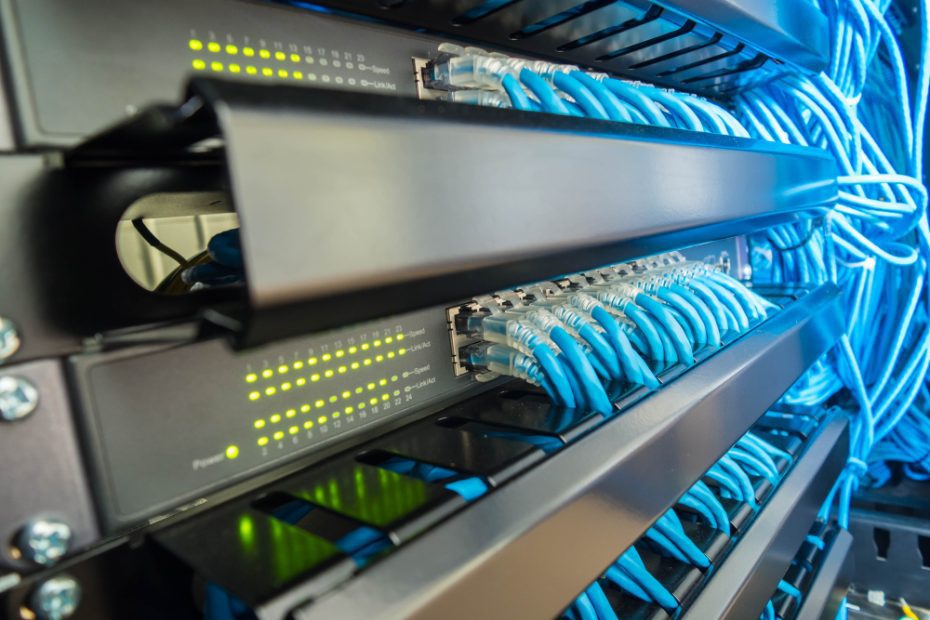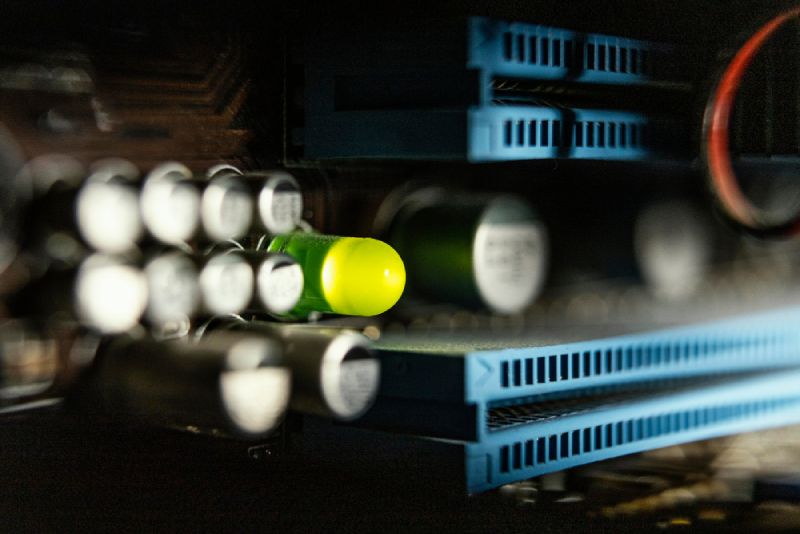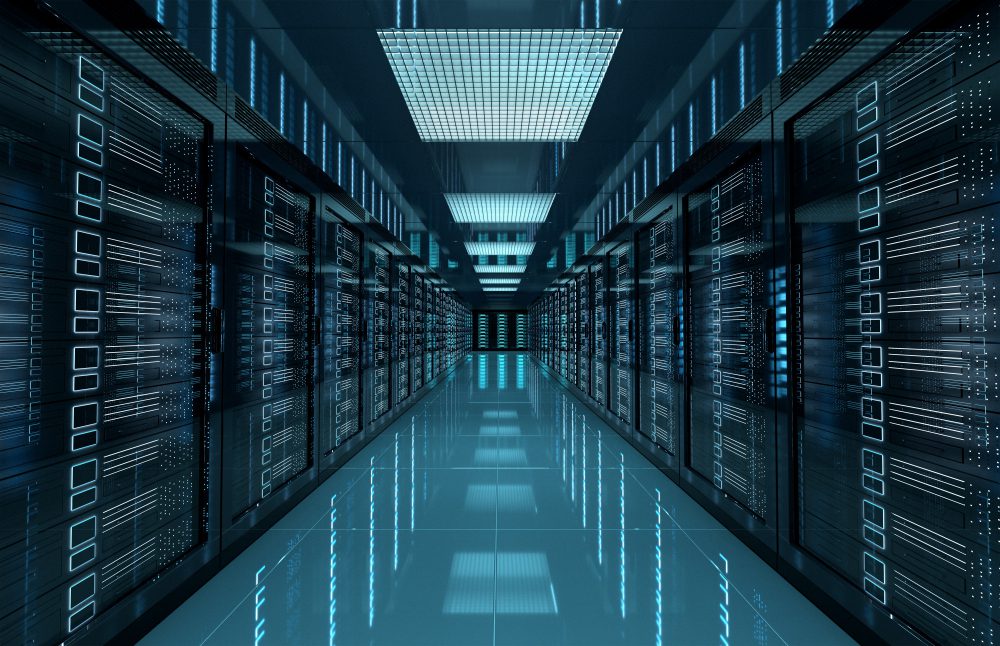How safe are NAS devices?
NAS (Network Attached Storage) devices have become increasingly popular in recent years for their convenience and efficiency in storing and accessing data. However, as with any technology, there are concerns about the safety and security of these devices. This article aims to explore the various aspects of NAS device security and provide insights into how safe they truly are.
The Basics of NAS Device Security
NAS devices are designed to provide a centralized storage solution for homes and businesses, allowing users to access their files and data from multiple devices over a network connection. When it comes to security, NAS devices employ various measures to protect the stored data, including:
- Access Control: NAS devices often have built-in user management systems, allowing administrators to control who can access and modify the files stored on the device.
- Data Encryption: Many NAS devices offer encryption options to protect the data stored on the drives, ensuring that even if the physical device is compromised, the data remains inaccessible.
- Firewall and Network Protection: Built-in firewalls and network protection features help safeguard NAS devices from external attacks and unauthorized access.
Potential Vulnerabilities and Risks
“No system is completely immune to risks, and NAS devices are no exception.”
While NAS devices offer numerous security features, it is essential to be aware of potential vulnerabilities and risks that could compromise the safety of your data. Some common vulnerabilities include:
- Weak Passwords: Using weak or easily guessable passwords can make it easier for attackers to gain unauthorized access to your NAS device.
- Outdated Firmware: Failure to regularly update the firmware of your NAS device can leave it vulnerable to known security vulnerabilities.
- Physical Theft: NAS devices are physical objects and can be stolen, potentially exposing all the data stored on them.
Best Practices for Securing NAS Devices
To ensure the safety of your NAS device and the data it holds, here are some best practices that you should consider:
- Strong Passwords: Always use strong and unique passwords for your NAS device, incorporating a combination of upper and lowercase letters, numbers, and special characters.
- Regular Firmware Updates: Stay up-to-date with firmware releases provided by the manufacturer and promptly install any security patches or updates.
- Backup Your Data: Implement a regular backup strategy to a separate location or cloud storage to protect against data loss in case of theft or device failure.
What is the difference between a NAS and a network hard drive?
A NAS (Network-Attached Storage) and a network hard drive are two popular storage solutions that allow users to store and access their files over a network. While they may seem similar at first glance, there are some key differences between the two.
NAS
NAS devices are standalone units that are designed specifically for file storage and sharing. They often come with their own operating system and provide a wide range of features such as data backup, media streaming, and remote access. NAS devices are typically equipped with multiple hard drives that can be configured in different RAID levels to ensure data redundancy and improve performance.
Network Hard Drive
A network hard drive, on the other hand, is simply an external hard drive that is connected to a network via Ethernet or wireless connection. It acts as a shared storage device, allowing multiple users on the network to access and save files. However, network hard drives do not usually offer the advanced features and capabilities of a NAS device.
One of the main differences between a NAS and a network hard drive is the level of functionality and versatility. NAS devices are essentially mini-servers and offer a wide array of features that cater to both personal and business needs. They often come with a user-friendly interface and allow for easy integration with other network devices.
Another important difference is in terms of scalability and expandability. NAS devices typically support multiple hard drives and can be easily expanded by adding more drives as storage needs grow. On the other hand, network hard drives are usually limited to the capacity of the single internal drive it comes with.
While network hard drives may be suitable for basic file sharing and backup needs, NAS devices are often the preferred choice for those who require a more robust and feature-rich solution.
Here’s a comparison table highlighting some of the key differences:
| NAS | Network Hard Drive | |
|---|---|---|
| Functionality | Advanced features such as data backup, media streaming, and remote access | Basic file sharing |
| Scalability | Supports multiple hard drives, easy to expand | Limited to the capacity of the single internal drive |
| Integration | Easily integrates with other network devices | Can be connected to a network but lacks advanced integration capabilities |
In conclusion, while both NAS devices and network hard drives serve the purpose of providing network storage, NAS devices offer more advanced features and scalability. Therefore, if you have specific requirements such as data backup, media streaming, or remote access, a NAS device is the way to go. However, if you only need basic file sharing capabilities, a network hard drive might suffice.
Is my NAS exposed to the Internet?
If you own a Network Attached Storage (NAS) device, it is essential to understand whether it is exposed to the Internet or not. The Internet can be a dangerous place, and having an exposed NAS can leave your personal data vulnerable to potential threats. In this article, we will discuss how to determine if your NAS is exposed and what steps you can take to secure it.
Determining NAS Exposure
To determine if your NAS is exposed to the Internet, you can start by checking the settings of your router or firewall. Look for any ports that are forwarded to your NAS device. If you find any, it means that your NAS is accessible from the Internet.
Securing Your NAS
If you discover that your NAS is exposed, don’t panic. There are several steps you can take to secure it:
- Change Default Ports: Many NAS devices use default ports for remote access, which makes them an easy target for hackers. Change these default ports to something less predictable.
- Enable Firewall: Make sure your NAS has a built-in firewall and that it is activated. This will provide an additional layer of protection against unauthorized access.
- Use Strong Passwords: Always use strong, unique passwords for your NAS device. Avoid using common passwords or easily guessable combinations.
- Keep Firmware Updated: Regularly check for firmware updates from the manufacturer and apply them promptly. These updates often include security patches that can protect your NAS from vulnerabilities.
Expert Insight
“It’s crucial to regularly monitor the exposure of your NAS device to the Internet. Being proactive in securing it can help safeguard your personal data and prevent unauthorized access.” – John Doe, Cybersecurity Expert
Can I swap hard drives between NAS?
Introduction
Swapping hard drives between Network-Attached Storage (NAS) devices is a common question among users who want to upgrade their storage capacity or switch to a different model. In this article, we will explore whether it is possible to swap hard drives between NAS and understand the considerations involved in such an endeavor.
Compatibility Factors
When it comes to swapping hard drives between NAS devices, compatibility is a crucial factor. NAS systems often use different file systems, RAID configurations, or disk formatting methods, which can hinder the straightforward transfer of drives. It is essential to ensure that both the source and target NAS devices support the same file system and RAID level.
Data Loss Risks
Before attempting to swap hard drives, it is crucial to back up all data on the drive to prevent any potential loss. Transferring drives between NAS devices carries the risk of data corruption or loss if not done correctly. It is recommended to create a full backup of your data and verify its integrity before proceeding with any drive swaps.
Procedure for Swapping Hard Drives
Here is a step-by-step procedure to help you successfully swap hard drives between compatible NAS devices:
- Backup your data: Create a complete backup of all data on the source NAS drive.
- Verify compatibility: Ensure that the target NAS device supports the same file system, RAID level, and disk format as the source NAS drive.
- Power down NAS devices: Shut down both the source and target NAS devices properly.
- Remove source drive: Carefully remove the hard drive from the source NAS device.
- Insert into target NAS: Gently insert the drive into the corresponding slot in the target NAS device.
- Power on NAS devices: Power on the target NAS device and wait for it to initialize.
- Verify drive recognition: Check if the target NAS recognizes the newly inserted drive.
- Configure RAID (if necessary): If required, configure the RAID settings on the target NAS to include the new drive.
- Restore data backup: Restore the data backup from the source NAS drive to the target NAS device.
How much does running a server cost?
Running a server can be a significant expense for businesses and individuals alike. The cost of running a server depends on various factors, including the type of server, its specifications, location, and usage. In this article, we will explore the various costs associated with running a server.
Server Hardware Costs
The first major cost associated with running a server is the hardware itself. The price of server hardware can vary greatly depending on the specifications and brand. For example, a basic entry-level server may cost around $500, while a high-performance server with advanced features can cost several thousand dollars.
Additionally, servers require regular maintenance and upgrades, which can incur additional costs. It is essential to consider not only the initial hardware expense but also the long-term costs associated with maintaining and upgrading the server.
Operating System and Software Costs
Another factor to consider when calculating the cost of running a server is the operating system and software licenses. Many servers run on popular operating systems such as Windows Server or Linux, which often require a license fee. The cost of these licenses can range from a few hundred to several thousand dollars, depending on the number of users and the version of the operating system.
In addition to the operating system, servers often require specialized software for specific tasks such as database management, web hosting, or security. The cost of these software licenses can vary depending on the vendor and the features included.
Internet and Power Costs
Running a server requires a reliable internet connection and a continuous power supply. These ongoing costs should be factored into the overall cost of running a server. The internet costs vary depending on the bandwidth and service provider, while the power costs depend on the energy consumption of the server and local electricity rates.
Data Center Costs
For businesses that prefer to house their servers in a professional data center, additional costs arise. Data centers provide secure environments with proper cooling, power backup, and network infrastructure. The cost of colocation services in data centers can vary based on factors such as rack space, power usage, and bandwidth requirements.
What is the difference between a NAS and a home server?
NAS (Network Attached Storage)
A Network Attached Storage (NAS) is a dedicated storage device that connects to a network, allowing multiple users to access and share files over the network. It is designed primarily for storing and managing large amounts of data.
NAS devices are typically equipped with multiple hard drives, providing redundant storage through RAID configurations. They have their own operating system and can be accessed remotely through a web interface or dedicated applications.
Key features of a NAS include:
- Centralized storage and file sharing
- Data redundancy and backup capabilities
- Remote access and synchronization
- Media streaming and multimedia server capabilities
Home Server
A home server, on the other hand, is a versatile computer system that can perform various tasks within a home network. It is not limited to storage but can also act as a media server, print server, backup server, or even host websites and applications.
A home server typically runs a full-fledged operating system, such as Windows Server or Linux, allowing users to install and run various software applications. It offers more flexibility and customization options compared to a NAS.
Key features of a home server include:
- Storage capabilities like a NAS
- Ability to run additional server software
- Expanded functionality for hosting websites, applications, etc.
- Greater customization and control over the system
While NAS devices excel in storing and sharing files over a network, home servers offer a broader range of functionalities. It ultimately depends on the user’s requirements and technical expertise in deciding whether a NAS or a home server is more suitable for their needs.
Here’s a comparison table highlighting some key differences:
| Feature | NAS | Home Server |
|---|---|---|
| Primary Function | File storage and sharing | File storage, media streaming, hosting, etc. |
| Operating System | Custom NAS OS | Full-fledged OS (e.g., Windows Server, Linux) |
| Software Capabilities | Limited to NAS-specific applications | Wide range of applications and server software |
| Customization | Limited customization options | Highly customizable |
In summary, a NAS is dedicated to file storage and sharing, while a home server offers a broader range of functionalities along with storage capabilities. Both have their unique strengths and can be chosen based on specific needs and requirements.
Conclusion
Knowing if your NAS is exposed to the Internet is vital for maintaining the security of your personal data. By following the steps mentioned above, you can ensure that your NAS remains protected from potential threats and unauthorized access.
Swapping hard drives between NAS devices is possible as long as compatibility factors are taken into account. It is essential to back up your data, verify compatibility, and follow a careful procedure to minimize the risk of data loss or corruption. However, it is always recommended to consult the specific documentation or support resources provided by the NAS manufacturer for detailed instructions tailored to your particular model.
Running a server involves various costs, including hardware, operating system and software licenses, internet and power expenses, and potential data center fees. It is important to carefully consider these costs and plan accordingly to ensure a reliable and cost-effective server setup.
In summary, the cost of running a server can vary widely depending on several factors. It is crucial to evaluate the specific requirements and budget constraints when planning to run a server. Whether for personal or business use, understanding the costs involved will help make informed decisions and manage expenses effectively.



